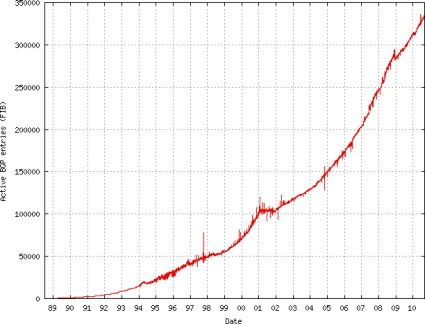There has recently been quite a bit of interest in the IPv4 exhaustion date. Understandable. It is coming up fast and sounds game changing. What perhaps isn’t obvious to the casual watcher of the Gadget Show or reader of newspaper technology sections is the underlying complexity that surrounds the approach to the end of this IPv4 world.
In reading this blog your ISP will have directed your http request across the internet from its own network to the Timico network and to the server hosting the website.
This server has a public facing IP address, part of a contiguous block that is advertised to the whole internet. The internet knows where the server is because every single ISP router in the world carries a record of it in what is known as the internet routing table.
Of course the depletion of the IPv4 address pool means that more of these blocks of IP addresses are being used up and therefore more routes are having to be carried in memory by routers. What’s more as the address space diminishes the size of block being handed out by the regional registries (RIRs) is going to get smaller.
As addresses run out it is also expected that individual ISPs will subdivide the blocks they have in order to sell on (a process known as deaggregation and not allowed really). The problem with all this is that the number of routes being carried is going to increase at a much faster rate than has historically been the case.
If you check out the chart below (courtesy of an excellent resource called the cidr-report) you can see how the number of routes has grown since the inception of the technology in 1989.

Note the glitch in 2001 – can anyone guess what happened there? This all amounts to the periodic need to upgrade routers being used so that they can cope with the additional number of routes carried – it all takes memory and processing power.
On a personal note of interest Timico got into the ISP game in 2005. The number of routes has more than doubled in the intervening 5 years. You can draw your own conclusions as to the resultant effect on the complexity of the internet but I’m sure it wont be a linear model.